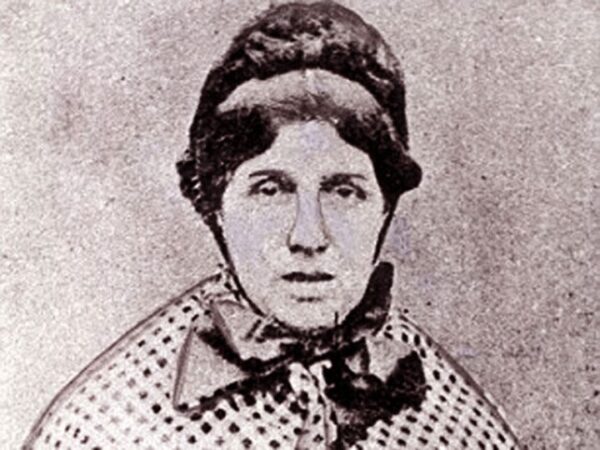Explore the chilling life of Mary Ann Cotton, Victorian England’s notorious female serial killer. Discover her dark crimes, shocking motives, and tragic human story.

Introduction
Mary Ann Cotton is remembered as one of England’s most infamous female serial killers. She is believed to have murdered at least 21 people, including her children, husbands, and lovers, mostly to collect insurance money.
Her life story blends domesticity, deception, and cold-blooded cruelty, creating a tale that is both shocking and fascinating. For readers exploring notorious criminals, check Jack Unterweger – Austria’s Notorious Serial Killer and John Wayne Gacy – The Killer Clown.
Even today, her life reminds us of how appearances can mask extraordinary darkness, and for more true crime insights, visit www.america112.com.
Early Life and Hardships
Mary Ann Cotton was born in 1832 in County Durham, England. She grew up in poverty, and her family faced multiple tragedies. Reports suggest she lost her mother and siblings to illness, a hardship that may have numbed her empathy and shaped her outlook on life and death.
By her teens, Mary Ann was already navigating relationships and learning to manipulate circumstances for survival. These early experiences of loss, struggle, and scarcity may have contributed to her later calculating and cold approach to life.
Marriage, Family, and Hidden Motives
Mary Ann married several men, often those who had life insurance policies. She had children from different marriages, yet many of them died under suspicious circumstances, often after brief illnesses.
She reportedly used arsenic, a commonly available substance, to poison her victims. While some of her actions may have been influenced by greed, her life reflects a harsh Victorian reality where women had limited means for survival.
Tragically, some historians believe that her first suspected murder was her own mother, suggesting a chilling pattern of calculated actions from a young age.
Life as a “Mother” and Secret Killer
Mary Ann presented herself as a devoted mother and caring wife, maintaining households and raising children. Behind this facade, she secretly poisoned her family members for financial gain, highlighting the stark contrast between her public and private lives.
She would care for the dying victims, making them believe they were receiving love and attention, while plotting their demise. This blend of nurturing and cruelty makes her story particularly haunting.
Discovery and Arrest
Initially, the sudden deaths in her family were attributed to illness. Victorian England was rife with disease, making poisoning hard to detect.
Over time, authorities noticed a pattern of suspicious deaths, especially following insurance claims. Mary Ann was finally arrested in 1872. Her arrest revealed a history of multiple murders, shocking the local community and the wider nation.
For readers interested in criminal investigations, check www.america112.com.
Trial, Conviction, and Execution
Mary Ann Cotton was tried primarily for the murder of her stepson, though evidence suggested her involvement in dozens of other deaths. She was convicted in 1873 and sentenced to death by hanging.
During her trial, observers were fascinated by her calm demeanor, which seemed to mask the horror of her crimes. She was executed later that year, leaving behind a legacy of fear, intrigue, and fascination.
Personality and Psychological Insights
Mary Ann was charming, manipulative, and pragmatic, blending into domestic life while secretly committing heinous acts. Some historians and psychologists argue that her actions reflect survival instincts and greed. They also highlight her emotional detachment. These traits were shaped by her harsh upbringing and societal limitations.
Even as a criminal, her story humanizes the complex interplay of hardship and choice. It shows that extreme circumstances can sometimes produce twisted outcomes.
Surprising and Little-Known Facts
- Mary Ann Cotton is considered one of Britain’s first documented female serial killers.
- She mainly used arsenic, exploiting its easy availability in Victorian England.
- Many of her victims were her own children, shocking even contemporary society.
- Her crimes were discovered through patterns of deaths and insurance claims.
- She was executed by hanging in 1873, ending a chilling criminal career.
- Despite her crimes, she displayed a calm and composed demeanor in court, captivating public attention.
- Her story has inspired books, documentaries, and historical studies, analyzing the psychology of female killers.
For further exploration of notorious criminals, visit www.america112.com.
Conclusion
Mary Ann Cotton’s life is a haunting mix of tragedy, deception, and calculated cruelty. She played the roles of mother, wife, and caretaker, while secretly committing horrific crimes for personal gain.
Her story reminds us that evil can hide behind ordinary appearances. Societal pressures can lead to twisted and tragic outcomes. Personal hardship and human greed also contribute to these outcomes.
Mary Ann Cotton remains a chilling figure in history. She shows how ordinary lives can conceal extraordinary horror. She continues to captivate true crime enthusiasts worldwide.
✅ Mary Ann Cotton’s story is both terrifying and tragic. It blends domestic life with ruthless criminality. It reminds us of the dark complexities of human nature.

